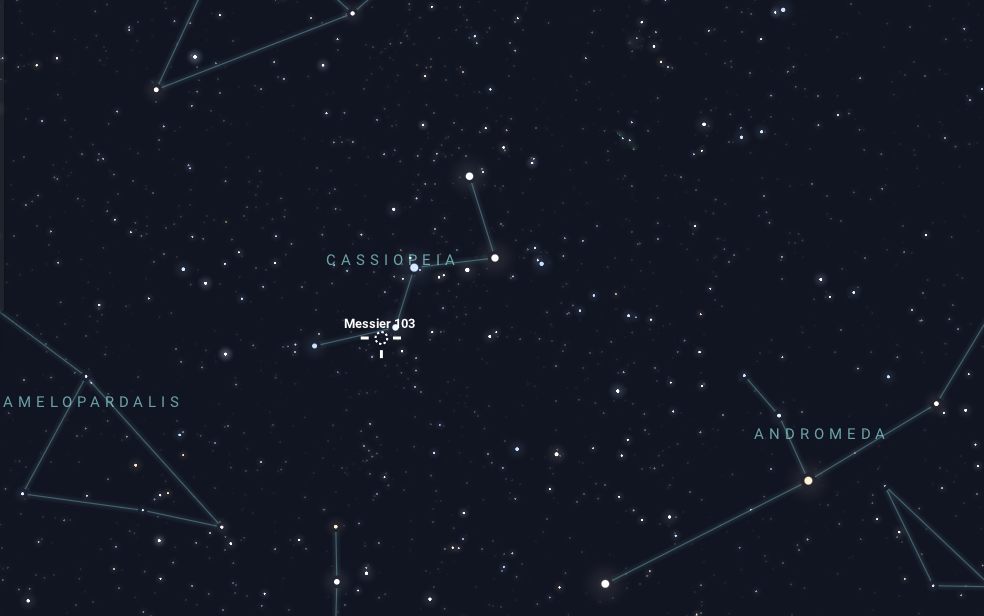Messier 103 (M103), also known as NGC 581, is an open star cluster located in the northern constellation Cassiopeia, near the border with Perseus. Situated approximately 8,500 to 9,500 light-years from Earth, M103 is one of the more distant open clusters in the Messier catalogue. It was discovered by French astronomer Pierre Méchain in 1781 and later included in Charles Messier’s famous catalogue of deep-sky objects as its 103rd entry.
Physical Characteristics
M103 is a relatively young open star cluster, estimated to be around 20 million years old. It contains a mix of young, hot blue stars as well as a few evolved red giants. These stars are relatively close together, giving the cluster a compact, triangular appearance that stands out in Cassiopeia’s star field.
The cluster spans an area of about 6 arcminutes in apparent size, which corresponds to a physical diameter of approximately 15 light-years. While M103 has a loose, somewhat irregular structure, its stars are still packed closely enough to appear as a cohesive group through telescopes. Observers typically see a prominent, hazy patch of light, with individual stars becoming more discernible with higher magnification.
Observation
M103 is a popular target for amateur astronomers due to its moderate brightness and relatively easy visibility. With an apparent magnitude of around 7.4, it is beyond naked-eye visibility but can be easily observed with binoculars or a small telescope under dark skies. In binoculars, M103 appears as a faint, fuzzy patch of light, while in larger binoculars or telescopes, some individual stars within the cluster can be resolved, enhancing its visual appeal.
The cluster is best observed from the Northern Hemisphere, where Cassiopeia is prominent in the night sky during the fall and winter months (October through February). For optimal viewing, dark, rural skies with minimal light pollution will reveal M103’s delicate structure, while larger binoculars or telescopes can showcase its individual stars.
To enhance visibility, it is recommended to observe M103 during a new moon or when the moon is absent, as this will reduce sky brightness and improve contrast. This setting allows observers to appreciate the cluster’s intricate details and the subtle contrast between its hot blue stars and red giants.




